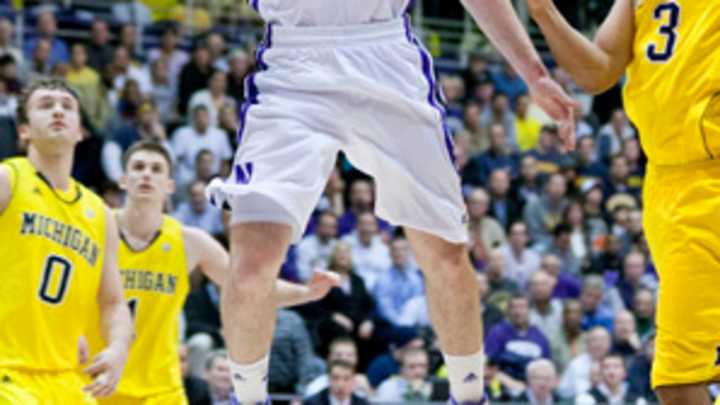The Bubble is everywhere in March, but it originated in auto racing


Of the many famous bubbles the world has seen, from Housing Bubble to Dot-Com Bubble to Stock Market Bubble -- from Bubbles the Chimp to Seinfeld's Bubble Boy -- none has had the strange charisma or single-name star power of The Bubble, a fickle mistress still tormenting athletes well into its sixth decade.
The Bubble is everywhere in early March, popping up (and often just-plain popping) beneath college basketball teams, none of whom wants to be on it, for The Bubble has come to refer almost exclusively to a state of late-February limbo in that sport: Teams not quite in, but not quite out, of the NCAA tournament.
But that breezy definition doesn't do justice to the shape-shifting powers of The Bubble, whose ineffable qualities make it so difficult to describe. Just in the last two weeks we have heard:
• "The [Northwestern] Wildcats aren't merely on the bubble," according to the ChicagoTribune. "They're looking down from a tightrope. 'We're living on the edge,' guard Nick Fruendt said."
• Iowa State forward Royce White told the Iowa State Daily that The Bubble beneath the Cyclones is "a crapshoot. To me, to say that we're on the bubble before this game is kind of a slap in the face."
• "I have a little experience of being on the bubble," said Jordan Theodore of Seton Hall. "I want to dance so bad."
The Bubble, by its very nature, is hard to pin down, as you can see. It is at once a tightrope, a cliff edge, a dice game, a slap in the face, an invitation to dance, a fickle mistress and a theological construct between heaven and hell.
The Bubble possesses, according to the reams of copy and hours of airtime devoted to it, a right side and a wrong side -- and hell hath no fury like a team that ends up on the wrong side of the scornful Bubble.
The Bubble may be the single biggest celebrity ever produced by March Madness, yet we hear very little of its origins. That's because the Bubble came late to the game, having begun its life in auto racing, most prominently at the Indianapolis Motor Speedway. "In racing parlance, the qualified driver with the slowest speed is 'sitting on the bubble'," as the Associated Press noted in 1961, "waiting for it to burst when somebody turns in a better ten-mile run."
That is to say, The Bubble has always referred to the Indy driver clinging to the race's last qualifying spot, a spot he'll have to yield if or when a faster time is driven. Which is why the last day of qualifying is called Bubble Day or Bump Day.
The 1970s was one long Bubble Day. Brewers utility man Kurt Bevacqua won the first and evidently last Bazooka Bubble Gum Blowing Championship. Bubble Yum, Bubblicious and Nets guard Bubbles Hawkins were all introduced, more or less simultaneously. And as a metaphor, The Bubble continued its own rise, crossing over from Indy racers to professional golfers and even professional bowlers who were striving to make a tournament's cut.
The Bubble alit on a basketball court for the first time in recorded history -- near as I can tell -- in 1978. When the Milwaukee Bucks brought forward Otis Howard to camp, the Milwaukee Journal ran a small item, quickly forgotten: "Howard, a fourth-round draft pick, is sitting on the bubble." Howard played 14 games before his bubble burst, but by then The Bubble had floated onward, falling -- finally, and with great weight -- on college basketball.
As the St. John's Redmen rallied in 1979 to make and then advance in the NCAA tournament, coach Lou Carnesecca said they were "riding the bubble." It was a memorable utterance, and not just in hindsight, as The New York Times put the quote in their headline the next day.
The Bubble now belonged to college basketball, but largely remained a mystery to the game's fans. As the tournament grew in popularity and importance, The Bubble became hipster slang among coaches. But it had not yet entered the general public's water supply. "In the current basketball lingo, Kentucky and Florida are two basketball teams 'on the bubble'," noted the Lexington Herald Leader in 1985. "'On the bubble' refers to the indefinite post-season status of both teams."
Indeed, among writers covering teams whose tournament hopes were in jeopardy, The Bubble was very much on the bubble itself, contending with countless other analogies for journalistic supremacy. "The search for metaphors to describe their predicament has placed schools on the bubble, fence, brink or edge," wrote Jim O'Connell of the AP in 1989. "It was even described once as close enough to hear the music but too far away to join the dance."
Of course, we don't speak of Edge Teams, Brink Teams, Fence Teams or Wallflower Teams, because in the 1990s The Bubble prevailed. It became first the pre-eminent, and then the only, metaphor for tournament hopefuls by a kind of unconscious consensus. The Bubble spawned Bubble Watches and Bubble Teams, a phrase sometimes reduced to the first word only, as in "South Florida is a bubble."
The Bubble is now used endlessly in the way that all buzz phrases are before dying out. But somehow this one hasn't died. It made the leap from Gasoline Alley to sports buzz phrase to lexicological omnipresence.
We now have, at this time of year, more Bubble references than Lawrence Welk had bubbles. Quite how long this Bubble will last is anyone's guess. There doesn't appear to be a Bubble Bubble, like the Real Estate Bubble, but language is ever changing.
That's how it works, touching down out of the blue, lingering, alighting again, blessing us and then withdrawing, like the Good Witch in the Wizard of Oz, traveling in a bubble.
